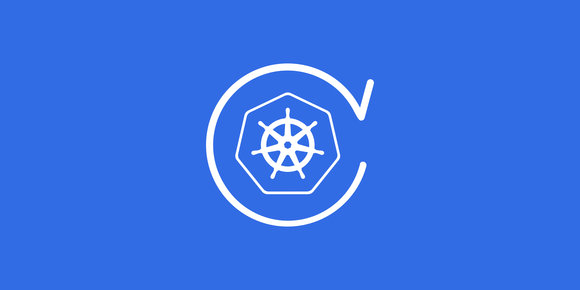
Photo by Alex Machado on Unsplash
Pupils dilated. Sweaty palms. Tingly legs. You lean in. A world of opportunity lays before you. You close your eyes…and wait.
— I Am Devloper (@iamdevloper) May 18, 2014
Deployments.
A number of months ago I found myself teaching the same concept over and over to others at work - deployments. Not what to deploy, that's usually pretty obvious. Not when to deploy, I'm a big believer of deploying early and often. And not even how to deploy, that's usually covered by READMEs or handled by CI/CD. But everything else involved that isn't obvious.
And this makes a lot of sense, I've never seen a computer science or bootcamp curriculum that covers this topic. Not to say it doesn't exist, I just haven't seen it. Deployments are the kind of thing you tend to learn from those around you at your first job. Do you know how to check the code is working? Do you know what could go wrong? Do you know how to fix things if they go wrong? Mindfulness plays a larger role in deploying code than developers might initially think.
So I did my civic duty and wrote a Confluence article on the subject that I'm now rewriting here.
When should you deploy?
A lot of this depends on your organization. Some organizations release many times a day, some once a day, some once a week, some once a sprint, or even some once a quarter. It really depends on your type of software, the clients' needs, and your business model.
But I'm a big fan of deploy early, deploy often. The GitHub Flow was designed around making deployments easy and reliable enough that any developer can deploy with confidence. It defines "when" as immediately after merging code into a deployable branch (master, develop, staging, etc.). This does three things:
- It lets you catch smaller bugs earlier rather than larger bugs later. If you keep the amount of code you're merging smaller you reduce your risks.
- It enforces individual responsibility. If the merged code isn't deployed immediately it's left as a possible time bomb for the next person. There may be known risks with the code that only the authors know about and can monitor for.
- It keeps
masterclean. Only production-ready code is merged tomaster, and if the code isn't deployed in a short amount of time after merge it should be reverted out.
Are you triple sure you're ready to deploy?
First, if you have tests for your code, make sure those are passing. I consider this the minimum bar your code must meet before asking others to review it.
And then second, have others reviewed it? The more eyes on the code the better - everyone brings a different way of thinking and a different set of skills.
Depending on the development environments available to you, it's also a good idea to test your code in a prod-like or staging environment. This will help highlight any errors in the code or deployment itself. This also allows stakeholders to make sure your changes meet their acceptance criteria.
Depending on your organization's structure you may want a QA engineer to test your changes as well. They have the skills and training to look for issues that others might miss.
It's also a good idea to give your code diff one more review before merging, there may have been a gap of time between writing the code and merging it where reviewing it again with a fresh pair of eyes can be helpful.
Have you deployed this codebase before?
If you haven't, it's a good idea to sit with an existing code owner and have them walk you through the process. There could be some tribal knowledge of risks or quirks you should be aware of.
I personally believe the deployment instructions for a codebase should live in its README, but documentation is a continuous process that will never be perfect so there may be some missing or inaccurate steps.
Is there an image that needs to be built?
It's popular for web services to be built into a Docker image that packages all code and code dependencies together. One of the main goals of containers is to provide consistency between environments.
The code you want to deploy may require a Docker image to be built, and those build instructions are going to vary slightly between codebases. If it does require a Docker image to be built it probably also requires pushing that image to a container registry such as Docker Hub or Quay . Consult your organization's instructions on containers.
Do you know what needs to happen before deploying?
The code being deployed may depend on some new infrastructure or external services, it would be a good idea to make sure those are still working as expected.
There may also be some additional steps that need to be taken such as manual database migrations for adding new tables or columns.
Do you know what needs to happen after deploying?
Similar to above, there may be some additional steps that need to be taken after deploying, such as manual database migrations for inserting or updating rows.
Do you know how to verify the deployed code is working?
An often forgotten step of deployment is ensuring the code deployed is actually working as expected and meets acceptance criteria in production.
It works on both my machine and in staging, shouldn't it work in production? Why do I need to check?
There are always differences in environments, and differences like higher load at scale can make code behave differently.
You should also check the code is working before communicating it's live to others, it's pretty embarrassing when someone else catches your mistakes.
Who should you notify after a successful deployment?
Are there any Scrum Masters or project managers you need to notify when the change is live? Do you need to notify the stakeholders directly? Someone probably wants to know about the changes!
Do you know how to determine if the deployed code is producing new errors?
Like I mentioned above, it's pretty embarrassing when someone else catches your mistakes. As the deployer of the code it's your responsibility to ensure you didn't introduce any new errors.
You're going to want to keep an eye on monitoring tools you use in your organization such as: log aggregators for new errors, performance monitors for any significant changes in requests throughput or response time, and hardware monitors to watch CPU and memory.
Do you know how to determine if the deployed code caused any of its dependents to produce new errors?
In the interconnected world we live in it's likely there is other code that is dependent on the code you just deployed, and it's important that you maintain the stability and contracts of your code for it. You may need to communicate changes to developers elsewhere in your organization so they can watch their code for any new errors.
The above section about monitoring for new errors can be applied to these dependents.
Do you know how to recover from a bad deploy?
I can't stress enough how important this is. Bad deploys and production errors happen to all developers regardless of skill level or attention to detail. There's no faster way to find edge cases and performance issues than releasing new code into production.
Immediately deploy the last known good version
Without hesitation, at the first sign of errors you can positively attribute to the new deployment, you need to deploy the last known good version. Fixing errors in production is not acceptable to most organizations.
Many times the instructions for this are the same as a normal deployment but with an old version number, but the codebase's README should have instructions or should link to documentation that has the instructions.
Be mindful of any extra steps such as reversing database migrations if required.
Then revert out the bad code
Immediately after deploying the old version you need to revert the bad code out. I consider this non-optional. This is to protect the next person who deploys the same codebase from including the bad code again in their deployment.
In GitHub, at the bottom of pull request pages there exists a "revert" button on the same line as the merge status - this can create a new revert pull request for you.
After the bad code has been reverted out of the branch only then is it safe to start development to fix any errors seen during or after deployment.
Conclusion
Every developer breaks production at least a couple of times in their career, but hopefully it's treated as a learning moment rather than a time to place blame. If you keep in mind all the questions posed here it's likely you'll make fewer mistakes. Eventually deployments will become second nature!





